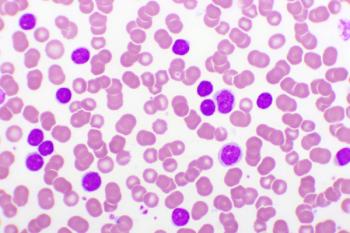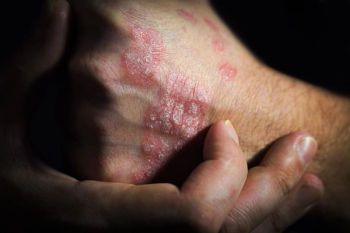
Olaparib Approval Expands Breast Cancer Treatment Options
The FDA based its approval on OlympiA trial data, which show the PARP inhibitor has the ability to reduce risks of invasive breast cancer recurrence, second cancers, and death, and to improve overall survival.
Lynparza (olaparib; AstraZeneca/Merck) has been
This latest indication for olaparib adds to excitement about the poly (ADP-ribose) polymerase (PARP) inhibitor, which is also being investigated for use in
An additional indication in the EU and Japan is for patients with locally advanced breast cancer.
“This important approval gives early-stage high-risk breast cancer patients in the US with a germline BRCA mutation a new targeted therapy option in the adjuvant setting starting today. Lynparza reduced the risk of disease recurrence in these patients, and now new data confirm it also significantly extended patients’ lives versus placebo,” said Dave Fredrickson, executive vice president, oncology business unit, AstraZeneca,
The FDA based its approval on updated data from the randomized, double-blind, placebo-controlled international
With primary and secondary end points of invasive disease-free survival (IDFS) and overall survival, respectively, statistically significant improvements were seen for both compared with placebo:
- 42% reduced risk of IDFS (HR, 0.58; 95% CI, 0.46-0.74; P < .0001)
- 32% reduced risk of death (HR, 0.68; 95% CI, 0.50-0.91; P = .0091)
For this study, the authors defined IDFS as, “time from randomization to the date of the first loco-regional or distant recurrence or new cancer or death from any cause.”
The most common adverse events overall in OlympiA were nausea (57%), fatigue (42%), and anemia (24%), with top grade 3 AEs being anemia (9%), neutropenia (5%), and leukopenia (3%). Thirty-one percent of trial participants required dose interruptions and 23% required dose reductions, with anemia being cited as the most common reason in both cases, at 11% and 8%, respectively. An additional 10% discontinued olaparib treatment, most because of nausea (2%).
OlympiA’s treatment protocol comprised 1 year of 300-mg twice-daily olaparib administered orally vs placebo—this is also the recommended olaparib dose—and to be included in the trial patients had to have a history of at least 6 cycles of neoadjuvant or adjuvant chemotherapy containing anthracyclines, taxanes, or both.
Close to twice as many events were seen in the placebo vs olaparib arm (20% vs 12%), with IDFS at 3 years in the treatment arm besting the placebo arm by 9 percentage points: 86% vs 77%. In addition, the treatment arm had a third fewer deaths: 75 (8%) vs 109 (12%).
These results are especially noteworthy because breast cancer is the most diagnosed cancer worldwide and they highlight the importance of genetic testing among women with high-risk breast cancer disease, to increase their targeted treatment options. Inherited breast cancers are typically more aggressive and deadly, despite their 5% to 10% occurrence as a breast cancer, and women with
BRCA mutations cause cell instability because they inhibit cell repair by inhibiting protein production or preventing its proper function. The result is a greater likelihood of developing cancer-related genetic alterations.
Newsletter
Stay ahead of policy, cost, and value—subscribe to AJMC for expert insights at the intersection of clinical care and health economics.









































